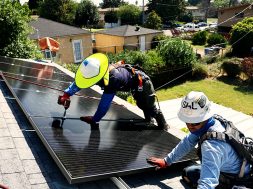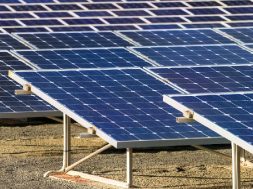
Airports, hospitals light up 40 gw rooftop solar plan
Plans to generate 40 gigawatt (gw) power through rooftop solar by 2022 have started gathering steam with hospitals, bus stations, metro rails and airports also installing rooftop solar capacity as part of generating clean energy to be utilised for their own setup.
On Tuesday, Sardar Vallabhbhai Patel International airport commissioned a rooftop solar plant. Whereas, a year ago, Cochin International Airport became the first airport in India to become ‘power neutral’ by powering its need through solar power plant within its own premises.
Earlier, only Indian Railways or large government complexes were working towards achieving the target assigned by the Ministry of New and Renewable Energy (MNRE).
This 40 gw target is a part of larger plan to build 100 gw of solar power capacity.
Already, Ministry of Railways has set a target for setting up of 1,000 megawatt (mw) solar power plants on the railway as well as private land and railway buildings during the next five years. The idea is to utilise a minimum of 10% of the energy requirement from renewable sources. Railway buildings, platforms, workshops and spare land parcels (without commercial value) with the Indian Railways will be utilised for the purpose.
As per the data with the Ministry of Railways, the target for power generation from solar panels for 2016-17 is 50 mw. Among the biggest rooftop solar plant installations by Indian Railways is Katra station in Jammu and Kashmir, where 1 mw of solar power plant has been set up. This is helping in saving around Rs 1 crore in power bills annually.
With various metro projects in the pipeline in Maharashtra, the state government has initiated the process for such installations. “Already there are plans to install solar plans at Mumbai Monorail stations. We also plan to get solar photovoltaic cells on the station roofs of under construction and planned metro corridors in the Mumbai Metropolitan Region” said U P S Madan, metropolitan commissioner of Mumbai Metropolitan Region Development Authority (MMRDA).
Even Delhi Metro Rail Corporation (DMRC) has so far commissioned 6.3 MWp (megawatt peak) of solar power plants across 21 locations in the Delhi Metro network. By March 2017, the DMRC will have commissioned solar power plants with a capacity of about 20 MWp and by March 2018, Delhi Metro will generate 31 MWp of solar power. As per its solar policy, the plan is to generate 50 MWp of solar power by the year 2021.
“Future is bright for solar rooftop scheme. At the moment, generation from the rooftop solar scheme is insignificant and disappointing. Large potential areas are still untapped. In fact, ground mounted solar has gained momentum and doing better,” said Sandeep Upadhyay, managing director and chief executive officer, Centrum Infrastructure Advisory.
As per the statistics available with MNRE, by December 2016, about 500 mw had been installed and around 3,000 mw was sanctioned and is under installation. The implementation plan of MNRE states that during this fiscal, it wants to install 1 gw.
Various government departments and ministries under the central government have collectively committed to deploying 5,938 mw of rooftop solar capacity for their internal power consumption. Solar Energy Corporation of India (SECI) has issued a tender for development of 1,000 mw rooftop solar capacity on pre-identified central government and department owned buildings. It is the largest such tender in India’s fledgeling rooftop solar market.














